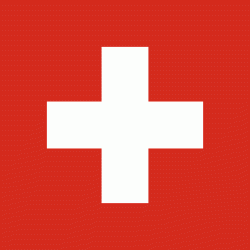Canton of Schaffhausen (Kanton Schaffhausen)
The canton of Schaffhausen, also canton of Schaffouse (Kanton Schaffhausen; Chantun Schaffusa; Canton de Schaffhouse; Canton Sciaffusa) is the northernmost canton of Switzerland. The principal city and capital of the canton is Schaffhausen. The canton's territory is divided into three non-contiguous segments, where German territory reaches the Rhine. The large central part, which includes the capital, in turn separates the German exclave of Büsingen am Hochrhein from the rest of Germany.
Schaffhausen was a city-state in the Middle Ages; it is documented that it struck its own coins starting in 1045. It was then documented as Villa Scafhusun. Around 1049, Count Eberhard von Nellenburg founded a Benedictine monastery which led to the development of a community. This community achieved independence in 1190. In 1330, the town lost not only all its lands but also its independence to the Habsburgs. In 1415, the Habsburg Duke Frederick IV of Austria sided with the Antipope John XXIII at the Council of Constance, and was banned by the Emperor Sigismund.
As a result of the ban and Frederick's need of money, Schaffhausen was able to buy its independence from the Habsburgs in 1418. The city allied with six of the Swiss confederates in 1454 and allied with a further two (Uri and Unterwalden) in 1479. Schaffhausen became a full member of the Old Swiss Confederation in 1501.
The first railroad came to Schaffhausen in 1857. In 1944, Schaffhausen suffered from a bombing raid by United States Army Air Forces planes that accidentally strayed from Germany into neutral Switzerland.
The cantonal constitution was written in 1876 and revised in 1895. The distinctive coat of arms bears the Schaffhauser Bock (Billy Goat of Schaffhausen).
Schaffhausen was a city-state in the Middle Ages; it is documented that it struck its own coins starting in 1045. It was then documented as Villa Scafhusun. Around 1049, Count Eberhard von Nellenburg founded a Benedictine monastery which led to the development of a community. This community achieved independence in 1190. In 1330, the town lost not only all its lands but also its independence to the Habsburgs. In 1415, the Habsburg Duke Frederick IV of Austria sided with the Antipope John XXIII at the Council of Constance, and was banned by the Emperor Sigismund.
As a result of the ban and Frederick's need of money, Schaffhausen was able to buy its independence from the Habsburgs in 1418. The city allied with six of the Swiss confederates in 1454 and allied with a further two (Uri and Unterwalden) in 1479. Schaffhausen became a full member of the Old Swiss Confederation in 1501.
The first railroad came to Schaffhausen in 1857. In 1944, Schaffhausen suffered from a bombing raid by United States Army Air Forces planes that accidentally strayed from Germany into neutral Switzerland.
The cantonal constitution was written in 1876 and revised in 1895. The distinctive coat of arms bears the Schaffhauser Bock (Billy Goat of Schaffhausen).
Map - Canton of Schaffhausen (Kanton Schaffhausen)
Map
Country - Switzerland
 |
 |
| Flag of Switzerland | |
Switzerland is geographically divided among the Swiss Plateau, the Alps and the Jura; the Alps occupy the greater part of the territory, whereas the Swiss population of approximately 8.7 million is concentrated mostly on the plateau, where the largest cities and economic centres are located, including Zürich, Geneva and Basel.
Currency / Language
| ISO | Currency | Symbol | Significant figures |
|---|---|---|---|
| CHF | Swiss franc | Fr | 2 |
| CHE | WIR Bank | 2 | |
| CHW | WIR Bank | 2 |
| ISO | Language |
|---|---|
| FR | French language |
| DE | German language |
| IT | Italian language |
| RM | Romansh language |















